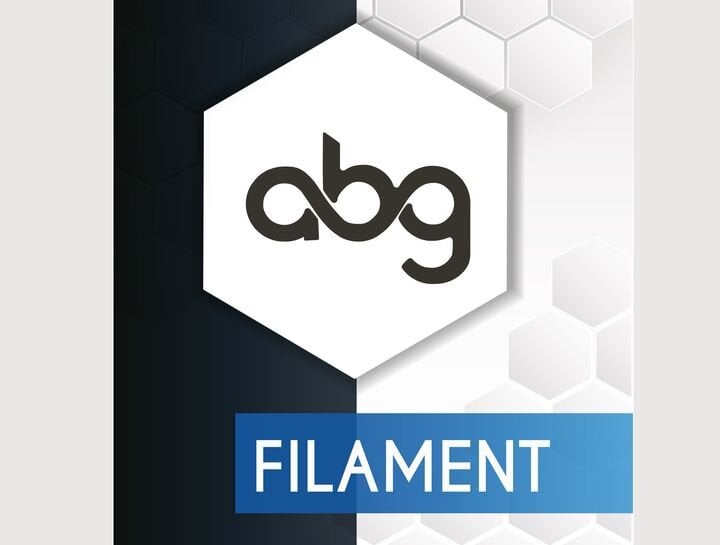![The most consistent 3D printer filament? [Source: ABG Filament]](https://fabbaloo.com/wp-content/uploads/2020/05/image-asset_img_5eb08c1cebe74.jpg)
There’s been a move towards higher-quality 3D printer filament in recent years, and a new vendor claims to have the best quality.
Turkey-based ABG Filament says their filaments are always within 0.01mm, the lowest I’ve seen from any producer yet.
3D Printer Diameter Variance
They’re talking about the variance in diameter of the filament. When a filament is produced, it is precisely extruded through a nozzle where it forms into a cylinder. This is spooled up and then sold to 3D printer operators.
The variance problem can be quite problematic, and the effect varies on different machines. Basically, if the diameter of the extruded filament is a bit too small, there is less material going through the nozzle than expected. This is under-extrusion, causing gaps, poor adhesion between layers, etc. If the diameter is too large, then you have blobs appearing.
Another effect is that if the variance is big enough, you might get a filament jam. It could be because the diameter is too large to fit and friction in the filament path stops extrusion. Or, a thin section of filament doesn’t present enough material for the extruder gears to grab and filament motion stops.
Standard 3D Printer Filament Variance
The best filaments have highly consistent diameters, providing constant motion and extrusion volume.
For many years the filament diameter tolerance on spools sold was not even mentioned! I suppose it doesn’t really matter if the product was “ABS Welding Wire” that was repurposed for 3D printing.
However, once dedicated factory lines began producing proper 3D printer materials, quality statistics started to appear. For a long time the de facto standard diameter variance was 0.05mm. If you saw a product with that variance, it was probably not horrible. But not necessarily good or great.
Prusa Research Prusament Diameter
Then in the past couple of years a very few vendors began producing filament with even higher diameter tolerances. One that received a great deal of press was Prusa Research’s in-house brand “Prusament”. This product has a “guarantee of ±0.02mm precision”. That’s very good and the 3D printing consistency improvement is noticeable.
Prusa Research is so certain of their quality that each spool has a QR code by which you can lookup in a database to see the production record of that spool and therefore meet their guarantee.
ABG Filament Diameter
Now there seems to be a new level reached by ABG Filament. They say:
“Our extruding machine also had to follow high standards we hold, and its design took over a year. Produced with the highest quality parts and elements, equipped with unique measuring and logging equipments, we are the first manufacturer that guarantees and provides data of the filament you will purchase, even before the purchase! After your order is completed, we can transfer you the data of every millimetre of your order, for you to review and ask for a remanufacture if you please. This also allows us to claim that our gauge deviation is less than 0.01mm, and you can see it before your purchase as well.”
Like Prusa Research, ABG Filament is also providing production records by spool, although perhaps in a different manner.
What is most interesting, though, is the 0.01mm tolerance, which is the smallest I’ve seen in filament. While this highly consistent material will obviously provide benefit, I am now wondering when the benefits flatten out: Would a 0.00001mm tolerance make a difference from a 0.000005mm tolerance? Probably not, and somewhere in a higher range will be the cut off point where tolerances are so small machine performance no longer improves.
Is that cut off point below or above 0.01mm? I’m not sure, but if I had a choice, I’d be using 0.01mm variance filament.
How do they do it? It’s not clear but they do say they spent more than a year developing their production line, so it’s likely they have all the latest gadgetry involved to ensure high quality production.
ABG Filament Availability
We’re told that ABG Filament produces quite a range of different 3D printing filament materials, including: ABS, PLA, Semi-Flex TPU, Flex TPU, STH, PP, PA, and HIPS, and all of these comply with ROHS and REACH certification standards. Even more interesting is that all their colors are made from food safe dyes, although the materials themselves may not be food safe.
Where can you obtain ABG filaments? They do have an online shop that appears to be addressing their domestic Turkish market, and prices seem to be quite inexpensive.
Aside from their own shop, ABG Filament seems to be available from a few select vendors located in most regions worldwide.
Via ABG Filament

